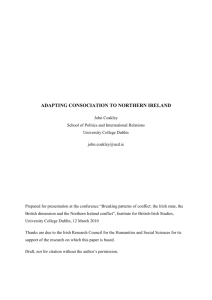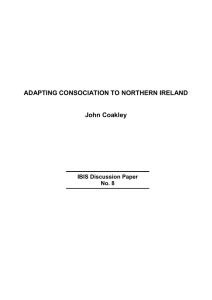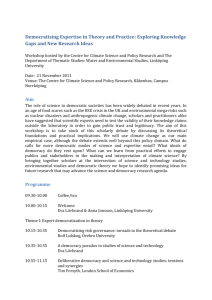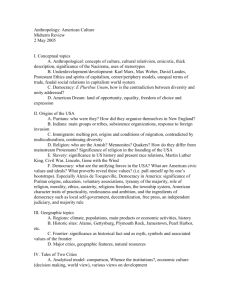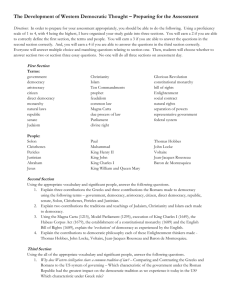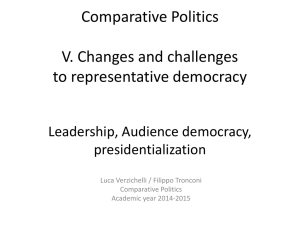lecture-7-notes
advertisement
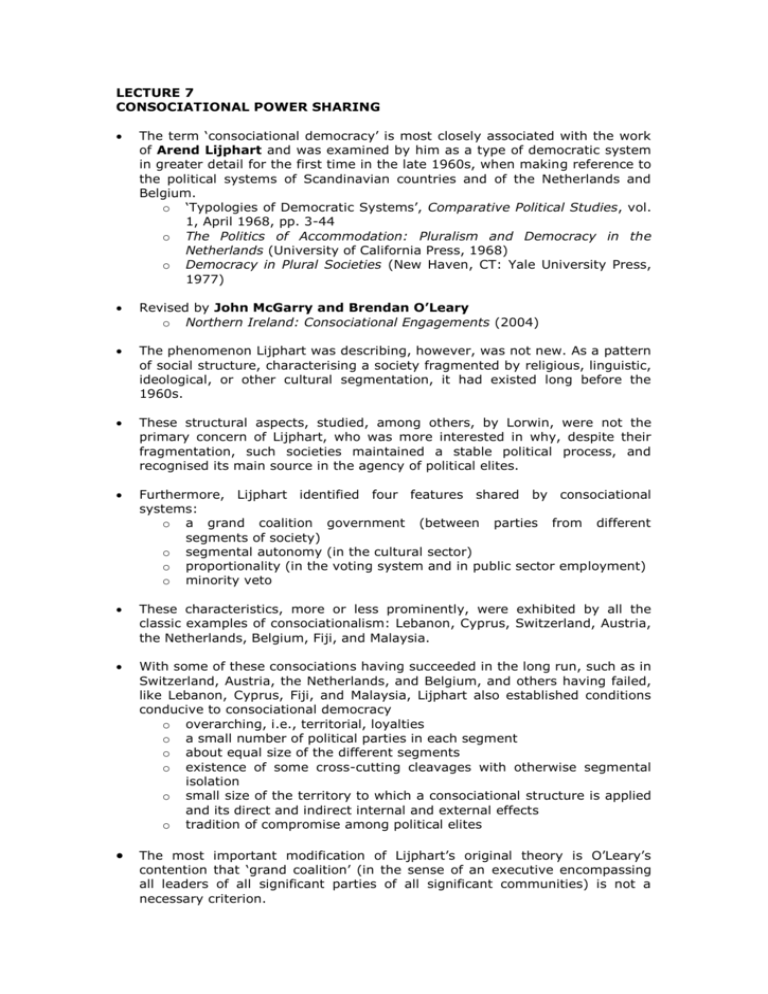
LECTURE 7 CONSOCIATIONAL POWER SHARING The term ‘consociational democracy’ is most closely associated with the work of Arend Lijphart and was examined by him as a type of democratic system in greater detail for the first time in the late 1960s, when making reference to the political systems of Scandinavian countries and of the Netherlands and Belgium. o ‘Typologies of Democratic Systems’, Comparative Political Studies, vol. 1, April 1968, pp. 3-44 o The Politics of Accommodation: Pluralism and Democracy in the Netherlands (University of California Press, 1968) o Democracy in Plural Societies (New Haven, CT: Yale University Press, 1977) Revised by John McGarry and Brendan O’Leary o Northern Ireland: Consociational Engagements (2004) The phenomenon Lijphart was describing, however, was not new. As a pattern of social structure, characterising a society fragmented by religious, linguistic, ideological, or other cultural segmentation, it had existed long before the 1960s. These structural aspects, studied, among others, by Lorwin, were not the primary concern of Lijphart, who was more interested in why, despite their fragmentation, such societies maintained a stable political process, and recognised its main source in the agency of political elites. Furthermore, Lijphart identified four features shared by consociational systems: o a grand coalition government (between parties from different segments of society) o segmental autonomy (in the cultural sector) o proportionality (in the voting system and in public sector employment) o minority veto These characteristics, more or less prominently, were exhibited by all the classic examples of consociationalism: Lebanon, Cyprus, Switzerland, Austria, the Netherlands, Belgium, Fiji, and Malaysia. With some of these consociations having succeeded in the long run, such as in Switzerland, Austria, the Netherlands, and Belgium, and others having failed, like Lebanon, Cyprus, Fiji, and Malaysia, Lijphart also established conditions conducive to consociational democracy o overarching, i.e., territorial, loyalties o a small number of political parties in each segment o about equal size of the different segments o existence of some cross-cutting cleavages with otherwise segmental isolation o small size of the territory to which a consociational structure is applied and its direct and indirect internal and external effects o tradition of compromise among political elites The most important modification of Lijphart’s original theory is O’Leary’s contention that ‘grand coalition’ (in the sense of an executive encompassing all leaders of all significant parties of all significant communities) is not a necessary criterion. Rather, O’Leary demonstrates that what matters for a democratic consociation ‘is meaningful cross-community executive power sharing in which each significant segment is represented in the government with at least plurality levels of support within its segment’ McGarry and O’Leary are advocates of liberal consociations which ‘reward whatever salient political identities emerge in democratic elections, whether these are based on ethnic groups, or on sub-group or trans-group identities’ Territorial self-governance is a significant feature within the liberal consociational approach which, in this context, emphasises that the selfgoverning territory should define itself from the bottom up, rather than be prescribed top-down. Liberal consociationalists favour o parliamentary systems o proportional (PR list) or proportional preferential (STV) electoral systems o decision-making procedures that require qualified and/or concurrent majorities o establishment and enforcement of strong human and minority rights regimes o independent and representative constitutional court For consociational settlements to work for ethnic conflicts, three fundamental conditions are required: o Integration or assimilation of the respective other group must not be on the agenda of either of the ethnic groups in conflict with each other in the short or medium term o Successive elites must be motivated to work for the preservation of the consociational settlement o Elites themselves must enjoy a sufficient degree of autonomy within their communities enabling them to make compromises and concessions without having to fear outbidding and outflanking by ethno-centric radicals.

